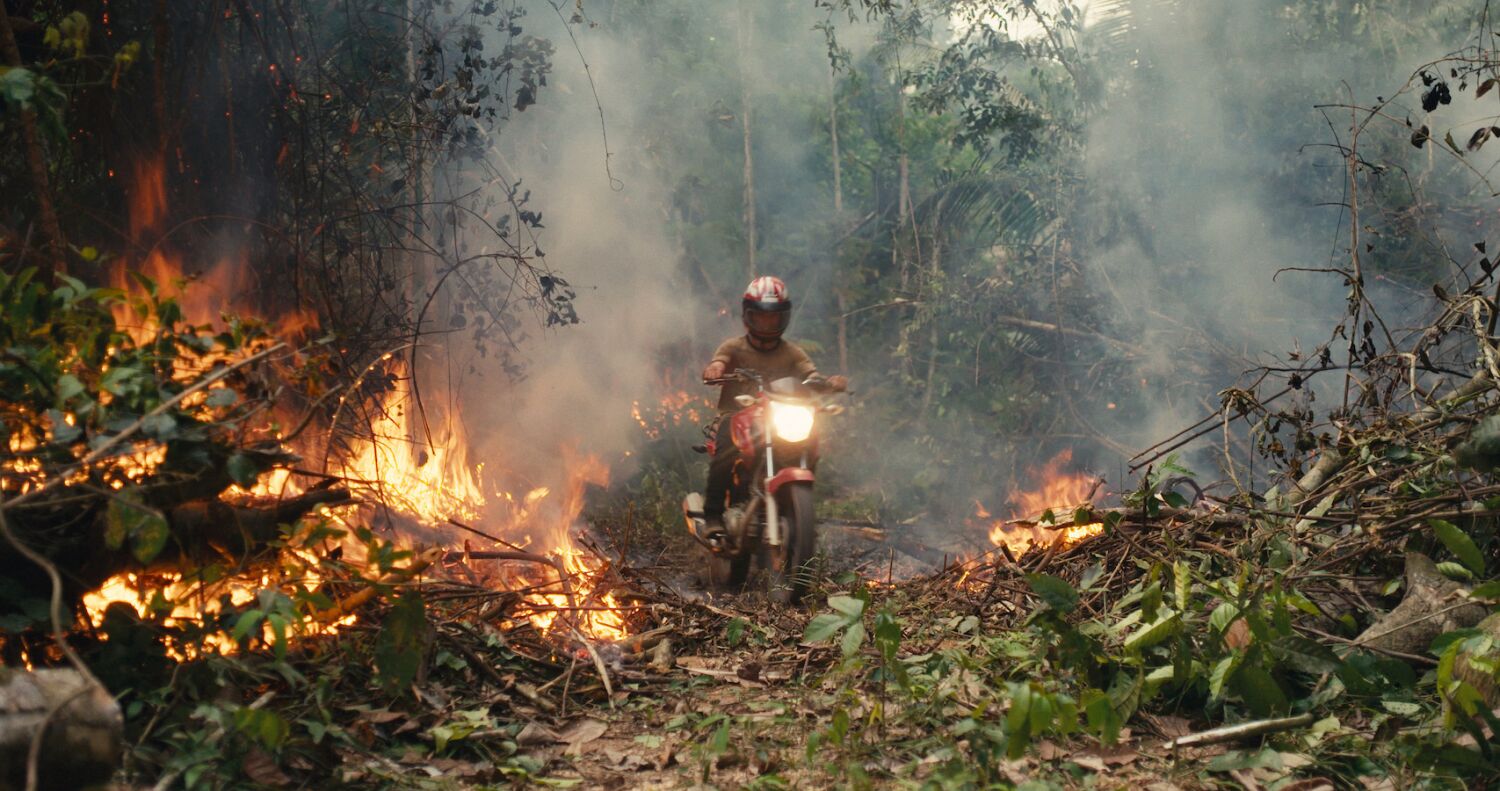How ‘The Territory’ documents what may be a last stand for the rainforest

Taking what they are certain is a last stand to save the imperiled Amazon rainforest, the remaining members of an Indigenous group fights armed intruders intent on clearing the protected lands for farms and housing. The tribe’s weapons, however, are primarily surveillance drones and video cameras, guided by a 19-year-old tribal leader who mounts a media campaign amid the anti-Indigenous rumblings of the ultra-right-wing regime of Brazilian President Jair Bolsonaro.
In “The Territory,” the debut feature documentary by director and cinematographer Alex Pritz, tradition meets innovation in a struggle not only to preserve a way of life, but to sustain a fragile ecosystem crucial to tempering the global climate crisis. The story weaves together the mission of the Uru-eu-wau-wau, an Indigenous group of fewer than 200 people, living in a 7,000-square-mile section of Rondônia, a state in central-west Brazil; Neidinha Bandeira, the longtime activist who champions their cause; and the working-class settlers who see an opportunity to take something for themselves, within the law or outside of it.
“For a first film, we really jumped in off the deep end,” said Pritz, whose project came together after he learned of Bandeira’s four decades of activism and went to meet her. She provided critical background and introductions and paired the filmmaker with a Brazilian journalist, Gabriel Uchida, who joined the project as a producer. The project also got a boost when director Darren Aronofsky enlisted early on as a producer. “He was the only person on our team who’d ever made a feature film before,” said Pritz, who has directed a few short films and also worked as a cinematographer on Matthew Heineman’s pandemic documentary “The First Wave.”
On the ground in Brazil, he said, “access was really difficult for a while.” The Uru-eu-wau-wau, who lost much of their population after first contact with outsiders in 1981, were hesitant to trust strangers, and the farmers were naturally paranoid about media. The rainforest also posed extreme physical dangers, and not from nature alone. Journalists travel there at high risk, Pritz noted, recalling the murders this summer of a British journalist and a Brazilian Indigenous rights activist. Once production began, the COVID-19 pandemic added another layer of complications, not least in keeping the film’s subjects, with their lower immunity to outside viruses, safe from infection.
As if all that wasn’t enough, the 2018 election of Bolsonaro further amped up tensions. “It was very tricky,” Uchida said, “because in a way we are enemies of the federal government.” According to Uchida, there were efforts to hack social media accounts and emails, cars being tailed and other forms of intimidation. “I had to change my phone number several times,” he said. “There were several incidents and weird things that happened that showed we were not dreaming … it was super-real.” A tragic moment in the film occurs when one of the Uru-eu-wau-wau is found dead, the victim of a homicide.
Although the Uru-eu-wau-wau are the protagonists of the film, the farmers are given some due. Bandeira encouraged the filmmakers to engage with them, Pritz said. “They see themselves as pioneers going out and creating something out of nothing, and they think they should be celebrated for doing that,” he noted. “Our social contract with them was really just, ‘We’ll be here. We’re not going to have a narrator, you know, coming in and telling people what to think about you.’” That these would-be homesteaders have low economic status is not insignificant. “It’s been one of the real successes of the Bolsonaro government and a lot of populist governments to convince poor disenfranchised people that their neighbors, other poor, marginalized people, are their enemies.”
Pritz and his team had to stop production for a year due to the COVID outbreak. But there was an unexpected boon, as the Uru-eu-wau-wau continued to shoot footage themselves. “It felt terrifying,” Pritz said. “It felt like maybe we were losing control of the film, writ large.” But the work of Tangãi Uru-eu-wau-wau, particularly in scenes of surveillance maneuvers — in which his people tracked the presence of farmers invading their land — captured images in ways that Pritz, with whom he shares cinematography credit, had not.
“It was super-obvious that the way he had done it was just plain better, aesthetically speaking,” said the director, who noted his collaborator’s “unmediated, chaotic, rough-and-tumble version of events. That is actually how it feels when you’re there in the moment. He has a really direct point of view but also is able to link things really fluidly in the way that he moves the camera.”
The collaboration evolved quite organically, according to Pritz. Bitaté, the group’s young leader, had already applied his education in a regular high school to bring in the technology they needed to record evidence against the farmers. “It became a really natural extension of the story itself to say, ‘Hey, do you guys feel comfortable not just filming to take it to the public prosecutor, but also filming for this long-term project that we’ve been engaged in together?’” Pritz recalled. “That just opened up a bunch of new creative possibilities.”
For all the latest Entertainment News Click Here
For the latest news and updates, follow us on Google News.
